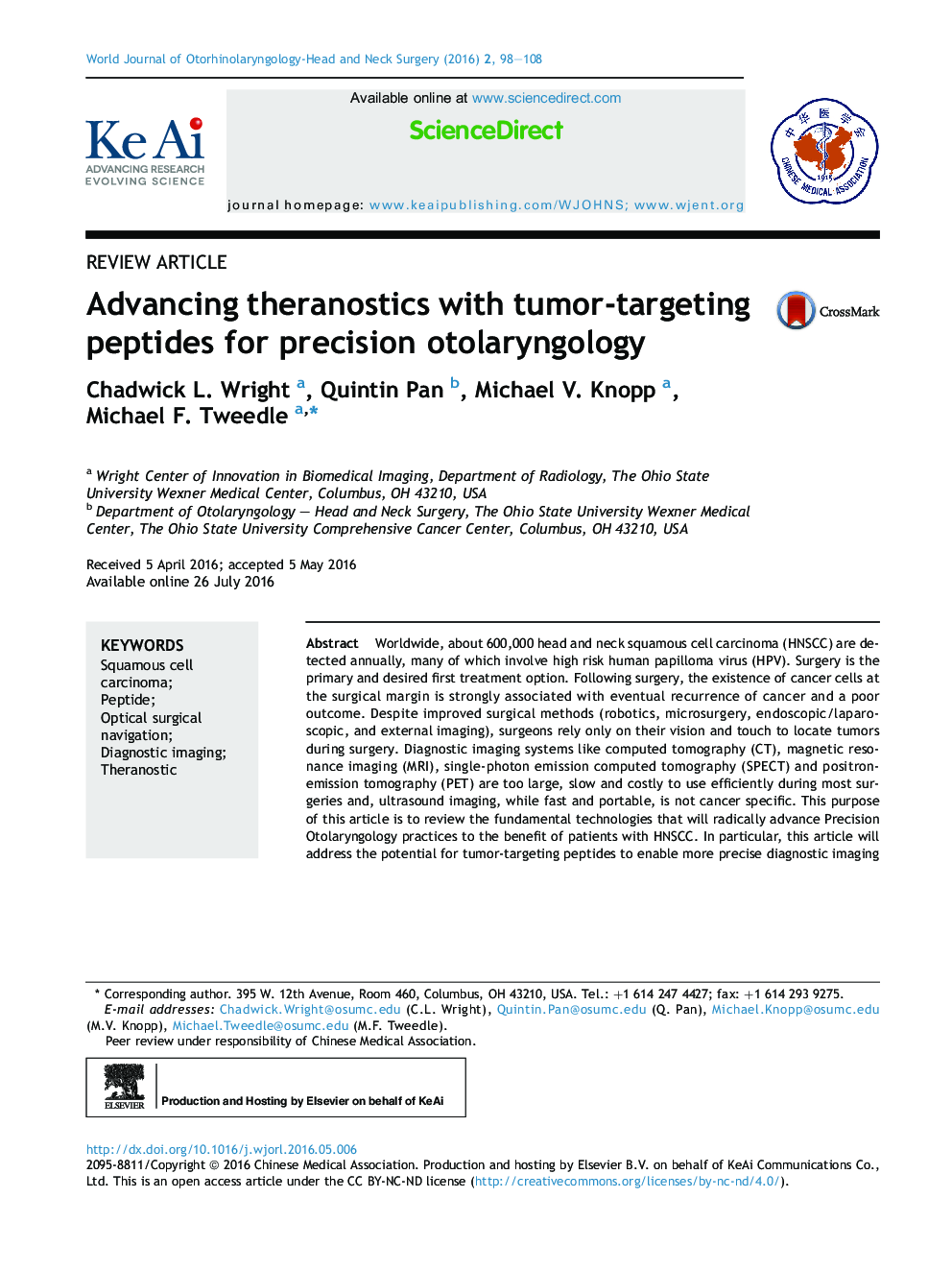| Article ID | Journal | Published Year | Pages | File Type |
|---|---|---|---|---|
| 3393670 | World Journal of Otorhinolaryngology - Head and Neck Surgery | 2016 | 11 Pages |
Worldwide, about 600,000 head and neck squamous cell carcinoma (HNSCC) are detected annually, many of which involve high risk human papilloma virus (HPV). Surgery is the primary and desired first treatment option. Following surgery, the existence of cancer cells at the surgical margin is strongly associated with eventual recurrence of cancer and a poor outcome. Despite improved surgical methods (robotics, microsurgery, endoscopic/laparoscopic, and external imaging), surgeons rely only on their vision and touch to locate tumors during surgery. Diagnostic imaging systems like computed tomography (CT), magnetic resonance imaging (MRI), single-photon emission computed tomography (SPECT) and positron-emission tomography (PET) are too large, slow and costly to use efficiently during most surgeries and, ultrasound imaging, while fast and portable, is not cancer specific. This purpose of this article is to review the fundamental technologies that will radically advance Precision Otolaryngology practices to the benefit of patients with HNSCC. In particular, this article will address the potential for tumor-targeting peptides to enable more precise diagnostic imaging while simultaneously advancing new therapeutic paradigms for next generation image-guided surgery, tumor-specific chemotherapeutic delivery and tumor-selective targeted radiotherapy (i.e., theranostic).
